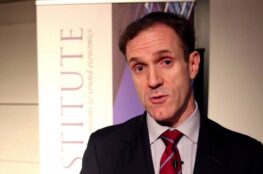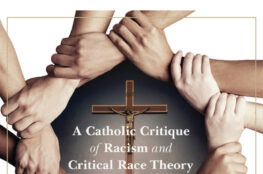A couple of months ago, in one of my “Weekly Reading” posts, I linked to a piece by Rod Dreher where he describes a First Things (FT) conference “discuss[ing] the future of religion in the public square[.]” The three conference papers have now been published. They are as follows:
- Michael Hanby, “The Civic Project of American Christianity”
- George Weigel, “To See Things As They Are”
- Rod Dreher, “Christian and Countercultural”
While I remain skeptical of FT’s intents and purposes, the existence of these essays in its pages provides further proof that the publication has, to a significant degree, turned the corner away from the neoconservative ideology which once directed it. Weigel, as most know, is a hangover from the old days, though he now tends to write with a bit more circumspection than in times past. Hanby and Dreher, however, sit comfortably outside of the neoconservative bubble. Their pieces, directly and indirectly, raise a number of important questions while seeking to map out a response to what Hanby calls “our post-Christian liberalism.” How plausible those suggestions are, and the extent to which we are likely to see them implemented, will, I hope, become subjects of intelligent, focused, and charitable debate in the coming weeks and months. The old approach, centered on rallying the Christian electorate to vote Republican, is effectively dead. As both Alasdair MacIntyre and Thomas Storck have before noted, Christians — and specifically American Catholics — have been all too eager to freely surrender their support to the Republican Party in exchange for next-to-nothing at all. (Of course, it’s worth mentioning that those Catholics who continue to throw their support behind Democrats receive little more than the psychic benefit of believing that upholding the contemporary administrative is the same as following the Church’s social magisterium.)
Hanby’s concern to preserve an authentically Christian witness against socio-political liberalism is commendable. It’s also not new. During the revolutionary upheavals of the 18th and 19th Centuries, the Catholic Church stood as a bastion against the rise of liberalism, condemning its errors without bashfulness and imploring the people and nations of the world uphold the social reign of Christ the King. By the middle of the last century, however, the Church’s leaders had lost sight of both the errors of liberalism and the means to combat them. A false peace was inaugurated—one which liberalism itself never intended to honor. And it hasn’t, as we have seen for decades now. Sadly, this reality has not been enough to invoke a fresh spirit of resistance, but has instead prompted increasingly louder calls for capitulation on fundamental matters of morality and doctrine. If there exists tensions, even direct hostilities, between liberalism and the Church, it is not, as some aging prelates suggest, that our peace with liberalism has failed, but that we have failed to become liberal enough (!).
It is a shame that Hanby didn’t have words for this troubling situation, or make a comparison between the present crisis in society and the ongoing liberal crisis within the Church. To do so places one in an uncomfortable position, as most traditional Catholics know all too well. Yet it is almost impossible not to read Hanby’s words about establishing a Christian front against contemporary socio-political liberalism and not call to mind those traditional Catholics, such as the Society of St. Pius X (SSPX), who continue to witness against the abuses and errors which have crept into—and in some circumstances overtaken parts of—the Catholic Church. The clergy of the Society, along with the faithful who regularly attend its chapels, long ago gave up a comfortable position within the regular canonical structure of the Church in order to preserve the Faith from those many wolves in sheep’s clothing who continue to manipulate Catholic theology, spirituality, and liturgy for their own ideological agendas.
Bringing up the SSPX is controversial I know, but it is hard to find a more visible and persistent (though hardly perfect) example of Catholics standing firm against the storm without losing hope. At the same time, I would be remiss if I did not mention the smaller pockets of resistance peppered throughout the Catholic world. Some are individual parishes. Others are monasteries. And in addition to the SSPX, the Church today houses a number of traditional priestly orders and fraternities dedicated to preserving the Church’s authentic heritage. They may not all see eye-to-eye on certain matters of principle and prudence, but that does not take away from the fact that their existence provides some evidence of what Rod Dreher calls the “Benedict Option,” that is, keeping orthodox Christianity, and the fruits of Western civilization, alive in the midst of cultural ruin.
Some have criticized Dreher’s “Benedict Option” as both separatist and utopian—charges which Dreher, understandably, denies. Still, to read some of Dreher’s writings beyond his FT essay does leave the impression that there is more than a bit of romantic longing to Dreher’s vision, and that the lifestyle choices Dreher promotes on his American Conservative web-log are more suited to the bourgeois American Christianity of yesteryear rather than the renewed, robust, and resistant Christianity contemplated by the “Benedict Option.” A more thorough reflection on the role of true asceticism in the battle to preserve Christian culture, to say nothing of the need to condemn both modern materialism and consumptive excess as perverse outgrowths of economic liberalism, has yet to happen. Exercising a legitimate “Benedict Option,” or any option which rejects the liberal ordo to its face, without such a reflection continues to strike me as pointless.



